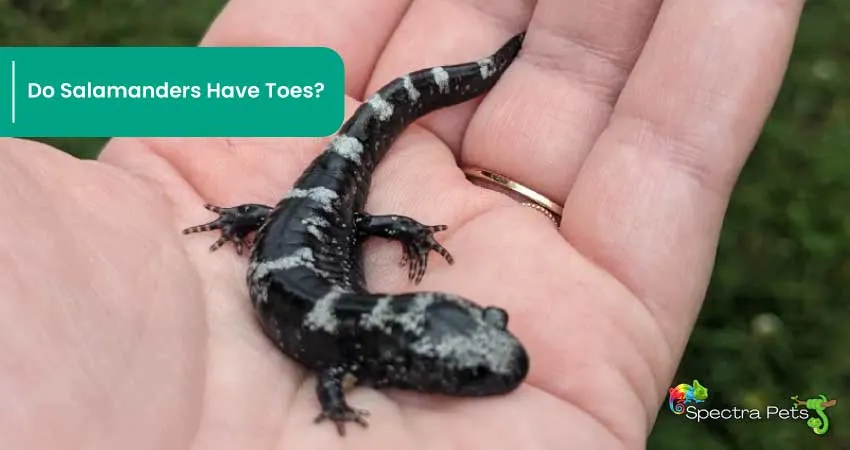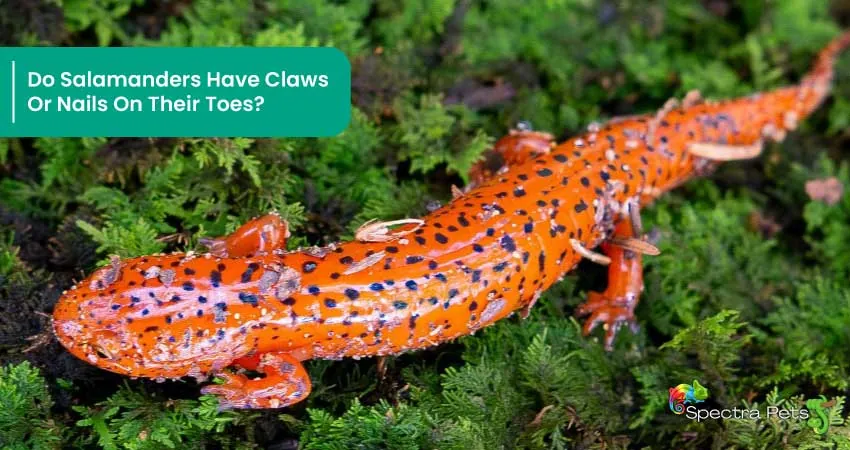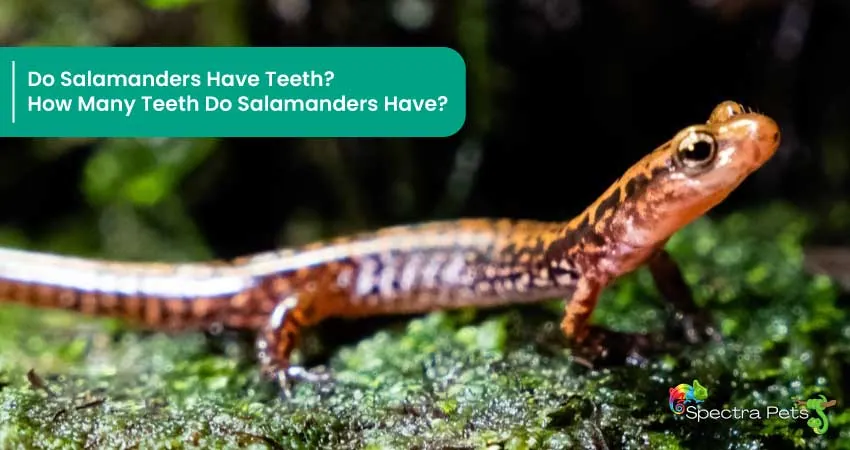Claws play a big role in many animals’ lives. It not only enhances the beauty of an exotic pet but also helps them to survive in a hostile environment. Yes, from digging food out to attacking the prey, your pet’s claws are invaluable.
What about Salamanders? Do they have claws or nails? You will be surprised to learn that most species of Salamanders don’t possess claws or nails. Instead, these cute little animals have digits similar to fingers and toes. With long and slender digits, they have small soft pads that help them grip and hold onto objects with ease.
Keep reading to learn more about many interesting things about the Salamander’s digits, toes, teeth, and other unique characteristics.
Do Salamanders Have Toes?
Claws and nails are something that are most commonly found on an animal’s toes. So, do salamanders have toes at all?
Salamanders have toes on their legs that are used for gripping and moving around. Most species of salamanders have four toes on their front legs and five toes on their hind legs. These toes are often equipped with small, sticky pads that help the salamander grip surfaces and move around efficiently in its environment.

Some species of salamanders also have small, sharp spines on their toes that help them catch and hold onto prey. The number and arrangement of toes can vary depending on the species of salamander, but in general, salamanders use their toes to move, climb, and catch food.
Do Salamanders Have Claws Or Nails On Their Toes?
So now, let’s get back to the original question.
The answer to this question depends on the type of salamander in question. In general, most salamanders do not have claws or nails. Instead, they have digits that are more akin to fingers and toes. These digits are typically long and slender, and they are equipped with small, soft pads that allow the salamander to grip and hold onto objects.
However, there are some exceptions to this rule. Some species of salamanders, such as the American clawed salamander (Cryptobranchus alleganiensis), do have claws. These claws are typically small and sharp, and they are used for digging and burrowing in the ground.

It’s worth noting that the term “claws” is often used interchangeably with “nails” when referring to the sharp, pointed appendages on the feet of animals. However, there is a subtle difference between the two. Claws are typically found on the feet of animals that are adapted for digging or climbing, while nails are found on the feet of animals that are adapted for running or grasping. In the case of salamanders, their digits are more like fingers and toes, so they do not have either claws or nails.
To be frank, while salamanders do not have claws or nails like many other animals, their unique digits allow them to grasp and hold onto things. These digits, along with their moist skin and long tails, help them thrive in their aquatic and terrestrial environments.
Now that you know that most salamanders do not possess claws or nails, you might also wonder whether they have teeth as well. Let’s find out more about this in the next section.
Do Salamanders Have Teeth? How Many Teeth Do Salamanders Have?

Yes, salamanders do indeed have teeth. Some species of salamanders have teeth that are specialized for different purposes, such as gripping prey or grinding up food. Other species of salamanders, such as the axolotl, have relatively few teeth or none at all. In general, though, salamanders are equipped with teeth that help them feed and survive in their environments.
The number of teeth that salamanders have can vary depending on the species. Some species of salamanders have many teeth, while others have relatively few or none at all. For example, an axolotl has relatively few teeth and may not have any teeth at all. In general, though, most species of salamanders have at least some teeth, and some have many teeth that are specialized for different purposes.
Read Also: Are Giant Salamanders Dangerous?
What Is Unique About Salamanders?

What actually makes salamanders such a unique lifeform?
Salamanders are a type of amphibians that are known for their slender bodies, moist skin, and long tails. They are found in a variety of environments, from damp forests to fast-flowing streams, and they come in a wide range of sizes and colors.
One of the most unique characteristics of salamanders is their ability to regenerate lost or damaged body parts. Many species of salamander can regrow limbs, tails, and even parts of their internal organs if they are injured or damaged. This ability to regenerate is thought to be due to the presence of stem cells in the salamander’s body, which allow them to rapidly regrow damaged tissue.
Another unique characteristic of salamanders is their skin. Unlike the dry, scaly skin of most reptiles, salamanders have moist, smooth skin that is covered in tiny glands. These glands secrete a slimy substance that helps to keep the salamander’s skin moist and helps it move easily through its environment. In some species of salamander, the glands also produce toxic chemicals that can make the salamander poisonous to predators.
In addition to their regenerative abilities and unique skin, salamanders are also known for their diverse range of habitats and behaviors. Some species of salamander live their entire lives in the water, while others spend part of their time on land. While some species are active during the day, others are nocturnal. This diversity of habits and behaviors makes salamanders a fascinating group of animals to study and observe.
Frequently Asked Questions (FAQs)
Do Lizards Have Claws Or Nails?
Some species of lizards also use their claws for self-defense, while others use them to help them move more efficiently over different types of terrain.
Do Salamanders Have Toenails?
Do Salamanders Have Sharp Teeth? Do Salamanders Bite?
In general, though, salamanders use their teeth to catch and eat insects, worms, and other small animals. They may also use their teeth for self-defense if they feel threatened.
Do Salamander Bites Hurt?
If you are bitten by a salamander, it is a good idea to wash the bite site thoroughly with soap and water to prevent infection, because it may additionally secrete toxins that may potentially harm you.
Wrapping Up
Salamanders are mysterious creatures with many unique characteristics. More than 650 species of Salamanders have been recognized, and most of them have digits instead of claws and nails. In my research, I found that the only Salamander with claws is the American clawed salamander (Cryptobranchus alleganiensis).
Hopefully, this article will provide you with some useful insight regarding Salamander claws, digits, teeth and more. Have fun playing with your cute little pet!
